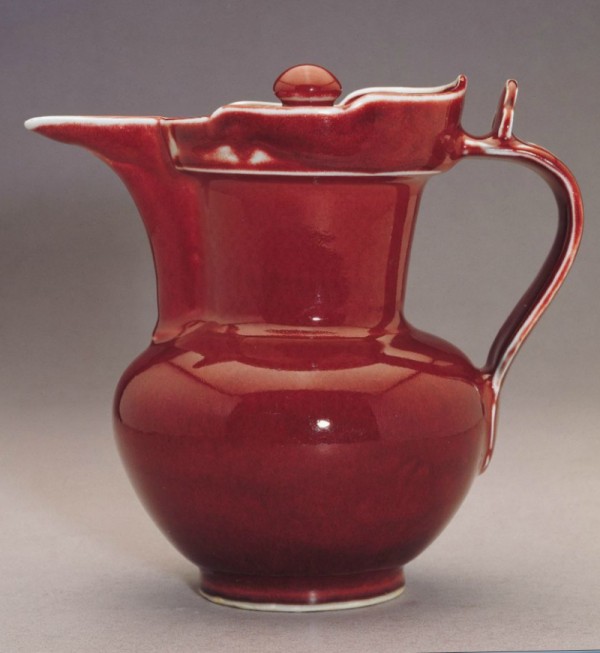
Monk's Cap Ewer with Ruby Red Glaze, Hsüan-te Reign (1426-1435), Ming Dynasty (1368-1644)
Height: 19.2 cm, diameter lengthwise: 16.1 cm, diameter at width: 11.2 cm, diameter of base: 7.6 cm, depth: 16.6 cm, weight: 880 g
Were used in ritual ceremonies of the Lamaist sect of Buddhism, and were mostly made in metal. The form was copied in early 15th century porcelain.
This form of ewer has a long history in Tibet—it was the shape of the vessels, typically metal or wooden, that were used during feasts and that might be displayed in front of Buddhist altars along with textiles and other offerings. When the form traveled to China, it was given the name “monk’s cap ewer” (sengmaohu) because it was thought to resemble the distinctive kind of hat worn by Tibetan monks. Because of that name, there has been some confusion about whether it was used in religious rituals, but that was most likely not the case.
For a discussion on Yongle ewers of this form, see Liu Xinyuan, Imperial Porcelain of the Yongle and Xuande Periods Excavated from the Site of the Ming Imperial Factory at Jingdezhen, Hong Kong, 1989, Catalogue, pp. 98 and 99.
A